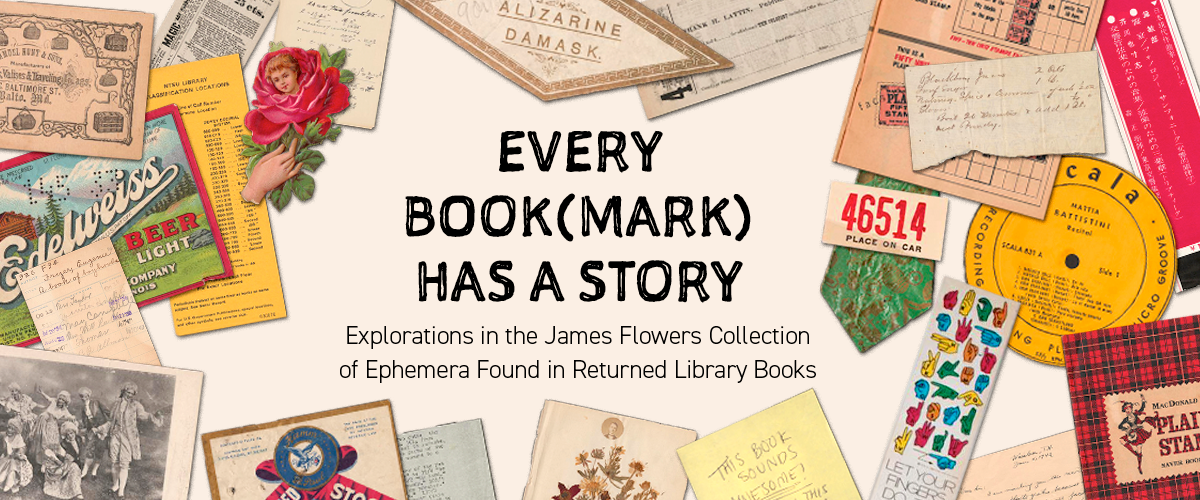Archives collect, preserve, and provide access to materials deemed worthy of long-term preservation in the historical and cultural record. This description might evoke thoughts of old, “important” documents and artifacts thought of as having great historical significance. However, in the archive, materials that tell the stories of the everyday are just as meaningful. This digital exhibit highlights one collection that reveals what we can learn by seeing the everyday in a new light.
About the Collection
James Flowers was a long time University of North Texas Libraries staff member who built a unique collection of things other people left behind in library books. As he reshelved returned books, part of James’s job was to remove any objects found within the books’ pages. He threw away things like paper clips and blank Post-It notes but would sometimes find things that were a bit more interesting and keep them. James didn’t think much about this until sometime around 2010, when he found a note in an old reference book that was clearly left behind on purpose.
James said “I found this intriguing, that a book was used as a means to communicate, just like a message in a bottle. I wondered how many more messages were out there?” From then on, he started flipping through the books in search of more messages. James recalled that once he started looking, “I found more trash than messages, but even the trash held unknown secrets.”
By the time of his retirement in 2021, James had about 3 shoe box sized containers of interesting things he found and jokingly suggested to a colleague that he might donate his little collection to the archive. James did not think anyone would really be interested in this “trash.”
The items James joked about donating now make up the James Flowers Collection of Ephemera Found in Returned Library Books. In the University Archive of UNT Special Collections, the collection is fully described, stored in an archival box and folders for long-term preservation, and available for anyone to request to view in the Hughes Reading Room.
What is ephemera?
To better understand this collection and its significance, it is important to further explore the idea of ephemera. Ephemera consists of items, paper and otherwise, that are typically designed to be used for a short time and then discarded. This can include notes, ticket stubs, flyers and advertisements, records and receipts, postcards, labels, business cards, scraps, wrappers, and much more. So why should these items be collected and preserved if they were meant to be temporary?
The answer lies in what ephemera can tell us about everyday life and the individuals who created or kept these items, if only for a fleeting time. Although individually the ephemeral items in this collection can appear insignificant, together they paint a picture of the past through evidence of what was being viewed, read, visited, learned, eaten, bought, collected, protested, and admired. At times, ephemera can even be the sole evidence of an event. For example, an intimate concert that occurred without any accompanying audio or video recording may only be remembered by the hand-produced flyer circulated beforehand. Ephemera can also be very personal. Ephemeral mementos such as ticket stubs, notes, receipts, and more are kept by many as reminders of significant events, people, and places.
Given the small size of some ephemera, it makes sense that the items found in the James Flowers Collection worked well as bookmarks or that books were thought of as a safe space to tuck these items away. While we cannot be certain whether these items were intentionally or absentmindedly discarded or if their absence was later noticed, we can be grateful that these items were recovered and saved for others to study and enjoy.
Explore
This exhibit is organized around common themes noticed among the items in the James Flowers Collection of Ephemera Found in Returned Library Books. Each section contains an array of one-of-a-kind objects, which might mean nothing to one viewer yet spark interest or inspiration in another. What will you discover in the discarded?
